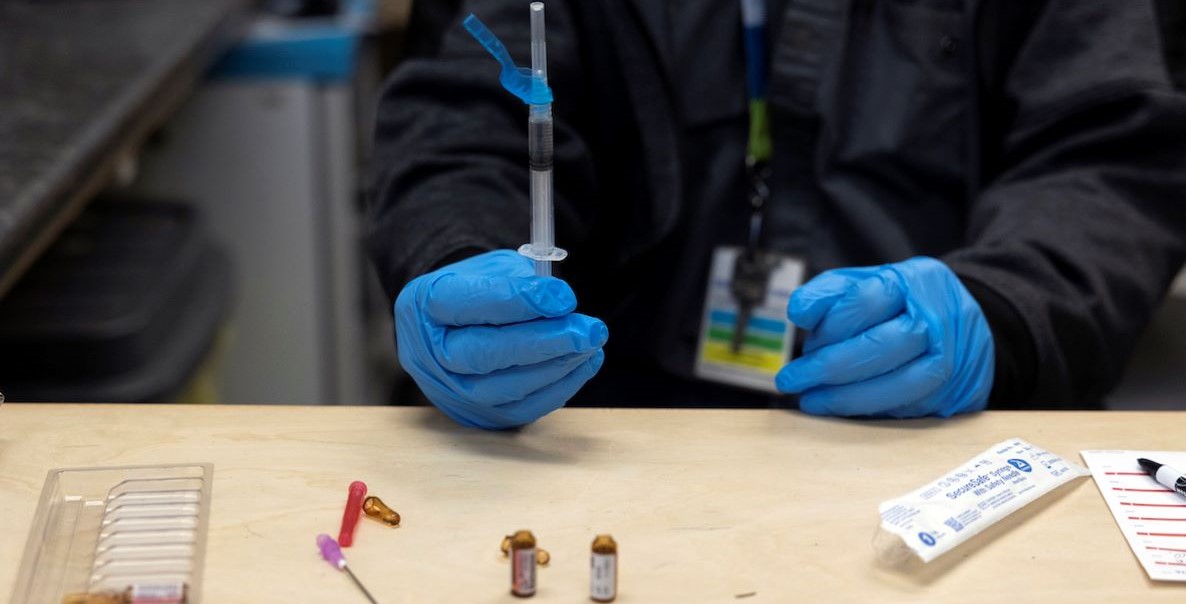On a brisk morning last September, registered nurse Funmi Nowocien wrapped her crimson cardigan tighter around her body and unlocked the door to her workstation in the Toronto Public Health building.
Outside, commuters rushed to work through Yonge-Dundas Square, an area reminiscent of Times Square. Inside, Nowocien’s office was quiet, filled only with a handful of employees preparing to open for the day.
Within the hour, clients would begin to trickle in. Nowocien would show each to a private cubicle featuring a metal desk, a plastic chair, and a mirror mounted to the wall. The counter of each cubicle was empty, save for a lighter, a sharps container, and other supplies needed for a very particular purpose: to safely use heroin and mixes of other illicit injectables, such as fentanyl.
The five-year-old site and its nine sibling sites have shown lifesaving results: zero overdose deaths, 67 percent fewer ambulance calls for treating overdoses, and a decrease in HIV and hepatitis infections.
Nowocien helps to run one of Toronto’s 10 safe injection sites, public health facilities where regular IV drug users can use in the presence of nurses who ensure they will not overdose, while also having access to mental health and housing services; primary health care; and — if they choose — medication assisted treatment programs to treat their addictions. (Safe injection sites also offer to check drugs for purity before use.)
“When people walk through the door, they know that this is a place where they can use without that fear of dying from an overdose,” Nowocien says.
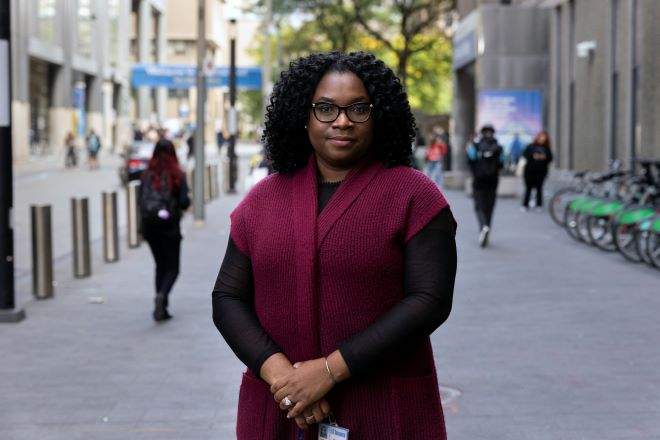
The five-year-old site and its nine sibling sites have shown lifesaving results: zero overdose deaths, 67 percent fewer ambulance calls for treating overdoses, and a decrease in HIV and hepatitis infections, according to research conducted by and published in Canadian Family Physician, the official publication of the Canadian College of Family Physicians.
Toronto is a model for what Philadelphia nonprofit Safehouse has been trying to do here for several years. This week, City Council members are poised to ban safe injection sites from all but one Council district. The state legislature is also considering a bill that would ban them throughout Pennsylvania.
Toronto launched its supervised sites with a methodical, community-oriented approach that accounted for the needs of local residents, businesses and users. On the other hand, here in Philadelphia, policymakers and citizens alike agree: What happened with Safehouse is a stark example of implementation gone very, very wrong.
But does that failure mean Philadelphia — and Pennsylvania — should eliminate the possibility of future safe injection sites? Or are there lessons to be learned from Toronto and other cities for which these sites are one tool among many to solve our city’s catastrophic opioid epidemic?
How Toronto got it done
Toronto and Philadelphia have much in common. Both cities are known for their walkability and food scenes and have almost identical population densities, unemployment rates, and average rent costs. While Toronto is significantly more populous (2.9 million people to Philadelphia’s 1.6 million), the demographic makeup is comparable: Philly’s population is about 60 percent people of color and 40 percent White, while Toronto’s is about a 50/50 split.
It is also undeniable that both cities have been affected by the opioid crisis. Philadelphia continues to experience one of the highest overdose rates in the country. In 2022, 1,413 people died from overdoses in the city — the highest number ever reported, according to the Philadelphia Department of Public Health.
In 2017, Philadelphia set a then-record for accidental overdose deaths, with 1,217 deaths — a 34 percent increase from the previous year. Toronto saw a similar increased in 2016, when the number of overdose deaths jumped 32.5 percent from 2015, though the death toll was just a fraction of Philly’s: 179.
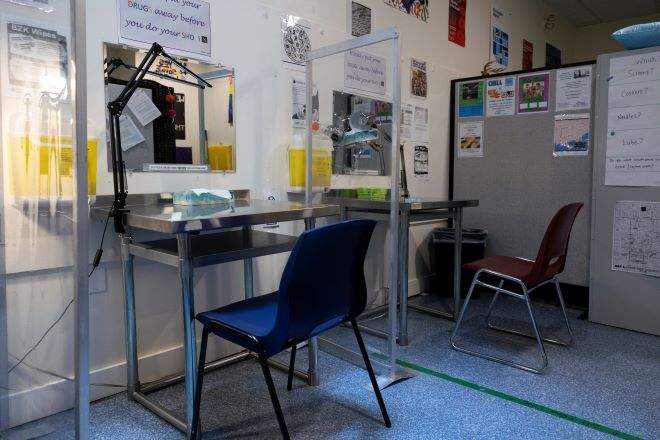
Researching safe consumption sites
Overdose prevention sites — where heroin use is monitored to prevent overdoses — have operated outside the United States for decades. Europe’s first official site opened in Switzerland in 1986. Today, 92 sites operate in 11 European countries, according to the European Monitoring Centre for Drugs and Drug Addiction. Additional sites also now exist in Australia, Canada and New York City.
Dr. Ahmed Bayoumi, a researcher and scientist at St. Michael’s Hospital in Toronto, had sounded the alarm on Toronto’s drug crisis early on, in an extensive 2012 study on the province’s potential to benefit from supervised consumption sites.
Bayoumi’s research, the Toronto and Ottawa Supervised Consumption Assessment (TOSCA), detailed different models for supervised consumption services. TOSCA took into account Ontario residents’ feelings about such facilities, researched best locations, and looked into potential liability issues. The research revealed many things about the city’s drug use: 73 percent of drug users in Toronto were sharing their drug supplies, and up to 80 percent were injecting drugs in public. TOSCA showed that supervised sites would reduce public drug use and be a good investment of healthcare funding, and that approximately half of the residents polled felt strongly that sites should be implemented if they are effective at reducing disease and neighborhood problems. Few wholly opposed the sites.
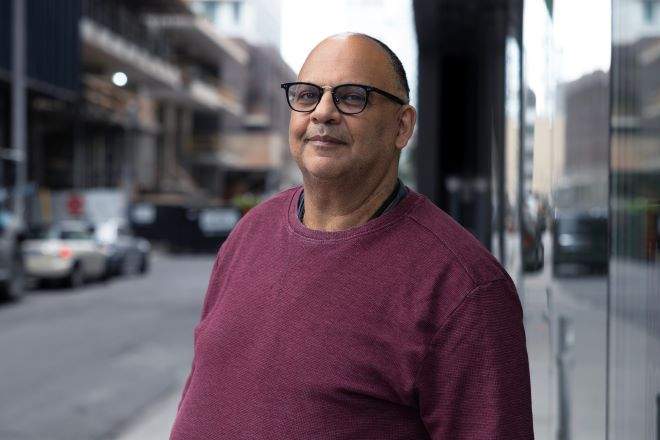
TOSCA’s most highly cited feature: findings on where to locate supervised consumption facilities. Bayoumi’s community surveys found broad support for opening the facilities close to where people were already using drugs, particularly where drug use and homelessness were visible. Additional surveys of people who use drugs, found half of participants would travel no more than 10 blocks to a facility.
Because drug use in Toronto is widely distributed throughout the city, Bayoumi recommended opening at least three supervised injection sites. An added benefit, Bayoumi writes: “Multiple supervised consumption facilities, especially if integrated into existing programs for people who use drugs, may also reduce community concerns.”
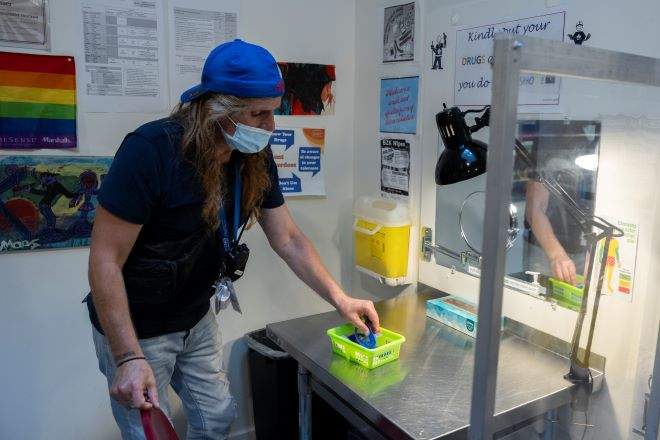
The key: community collaboration
Community opposition in Toronto centered specifically around the “not in my backyard” (NIMB) argument. Even residents and business owners who were supportive of supervised consumption site implementation did not necessarily want to see a facility near them. To alleviate these concerns, Bayoumi planned to integrate sites into previously existing health centers, again, in neighborhoods where public drug use was already visible.
He found that community members preferred to be consulted on their concerns in advance. Bayoumi and Dr. Rita Shahin, Associate Medical Officer of Health for Toronto Public Health, held several focus groups.
Shaun Hopkins, manager of supervised injection site The Works, says the key to mitigation is figuring out how to serve both local residents and people who use drugs. “It’s a challenge that we all have to embrace,” Hopkins says. “We have to work together in order to make it liveable for everyone and workable for everyone, but not at the expense of people who have to use our services.”
“I guess the big thing for me is letting people know that supervised consumption sites are necessary medical services, because addiction is a medical issue.” — Funmi Nowocien, R.N.
When community members expressed concern over site clients loitering and being high in public, The Works agreed to institute a large waiting room and an after-injection space. As for concerns over safety? The sites planned to work with the local police district to increase community policing.
TOSCA surveys showed, among other things, that Ontario residents were likely to agree with implementing supervised injection facilities if the goals specifically included: Increase contact with health or social workers; reduce neighborhood problems; reduce negative health consequences related to drug use. To this end, each supervised site in Toronto is equipped with wraparound services for mental health, housing, primary health care, and methadone (or medical rehab) programs.
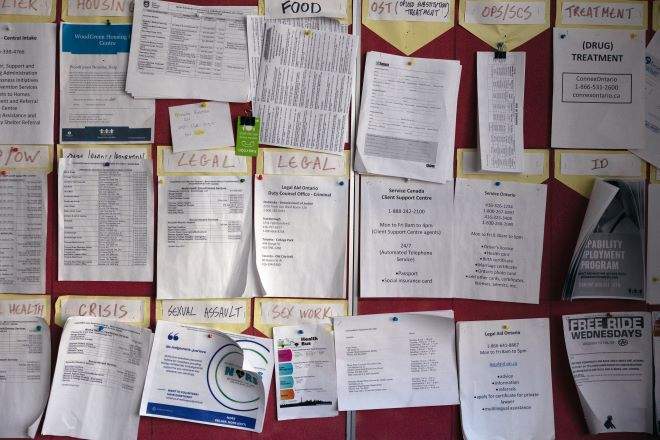
After five years of consideration and deliberation, Toronto agreed to accept Bayoumi’s results.
First, activists installed a pop-up safe injection site in Toronto’s Moss Park in August 2017. In two months, volunteers there helped reverse more than 100 overdoses. The activation was instrumental in convincing citizens that supervised consumption sites were safe and effective, Councillor Joe Cressy, chair of Toronto’s drug strategy, told The Toronto Star. He said, “The experience in Moss Park demonstrates that safe injection saves lives and works.”
The next month, Toronto’s health board voted to declare the city’s overdose crisis an emergency. The designation triggered greater access to federal funds that would pay to improve access to overdose data and expedite new overdose prevention centers.
Toronto’s initial rollout of supervised consumption sites in 2017 included three facilities — The Works, run by Toronto Public Health, and two community health center-operated sites. The rollout has since expanded to include 10 sites across the city — facilities that, as Bayoumi’s research predicted, are so intentionally spread out and integrated into existing programs that they have gone largely unnoticed by the public.
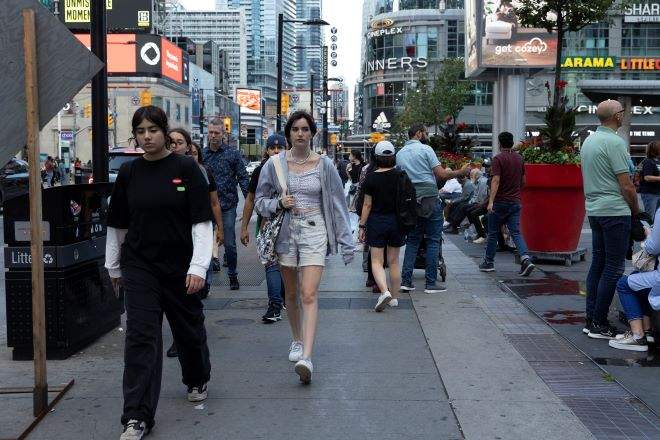
“I can’t tell who’s on drugs and who’s not,” says Maleehah Alli, a third year sociology student at Toronto Metropolitan University, whose campus sits just a block away from The Works. Employees working in the vicinity of The Neighborhood Group at St. Stephen’s Community House — a supervised consumption site located in the hip Kensington Market neighborhood — were similarly surprised. Tugce Aksu, co-owner of Pera Café, says she “didn’t know it was there,” but it “doesn’t affect [my] business.”
Nowocien says she takes every opportunity to speak to skeptics about the work. “People don’t understand … [They ask] ‘Oh, so what’s that about, are you helping people shoot up?’ But that’s an opportunity for me to just educate [them] around what the program is all about,” Nowocien says. “I guess the big thing for me is letting people know that supervised consumption sites are necessary medical services, because addiction is a medical issue.”
“A lack of meaningful engagement”
In Philadelphia, Safehouse — with the support of Mayor Jim Kenney, former Mayor and Governor Ed Rendell and others — proposed implementing what would have been the country’s first sanctioned supervised injection site in 2018. The City had commissioned a study that found that such a site would save 25 to 75 lives per year, based on 900 deaths. (That estimate would be likely higher now, given the increase in overdoses in 2023, and the increasingly deadly opioids on the street.)
The study estimated each site could prevent 230 new HIV and hepatitis cases annually, and could keep users from experiencing common skin infections that often balloon into emergent blood and heart ailments. All of this, the study concluded, would save citizens several million dollars annually.
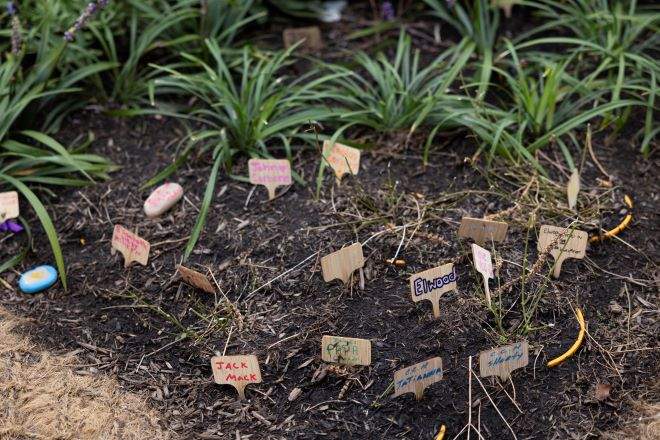
The proposal faced several years of challenges in court before U.S. District Judge Gerald A. McHugh found supervised injection sites did not violate federal law, giving Safehouse the green light to proceed. But the way the nonprofit approached the launch was a stark contrast to what happened in Toronto.
Toronto’s public health department funds and runs The Works. Philadelphia City officials, however, sanctioned an overdose prevention site — but would not pay for it. (This is in part a consequence of our public/private healthcare system, as opposed to Canada’s entirely public system.)
Whereas Toronto’s government and public health department spent years commissioning and funding focus groups and surveys. In Philadelphia — with half the population of Toronto’s population but, at this point, nearly seven times the overdose deaths — in February 2020, Safehouse announced plans to open a single site in South Philadelphia.
The community immediately pushed back. Nearly 7,000 people signed a petition against the site. Hundreds attended rallies and contentious community forums. Councilmember Kenyatta Johnson told reporters he learned about Safehouse’s plans only four days before their public announcement. Neighbors were concerned the site would adversely affect their homes, schools, and businesses — specifically, a daycare and an elder care organization in the same plaza. Then, the building owner pulled out of the lease.
Two weeks later, Covid hit. That June, the federal government appealed the order allowing Safehouse to open. Safehouse has been involved in a series of federal lawsuits ever since.
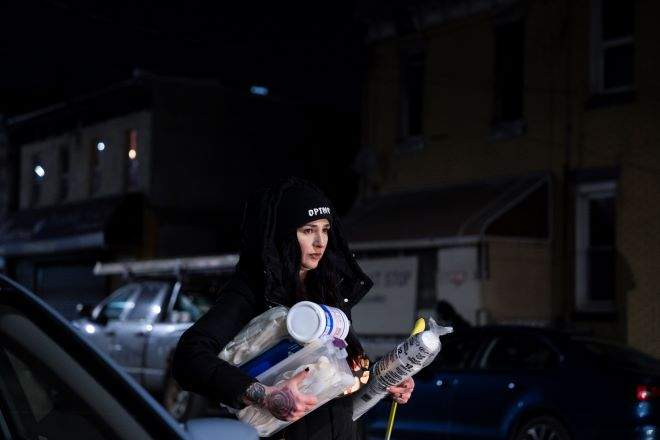
Bill McKinney, executive director of New Kensington Community Development Corporation, has witnessed firsthand as the City has swooped in and out of his neighborhood, making scattershot efforts to address the opioid crisis there. South Philly’s reaction to Safehouse did not surprise him.
“There was a lack of meaningful engagement,” says McKinney. “[It was] outsiders saying, We have determined what is best. Me telling you what is going to happen is not engagement.” McKinney says service providers and the City must consider the whole community when trying to address the crisis. “What is the relationship between everything? What are the other impacts? What are the unintended consequences?” he asks.
Ronda B. Goldfein, vice president and secretary of Safehouse’s board of directors, points to New York City as an example of how a U.S. city can successfully launch a safe injections site. East Harlem’s OnPoint has served 4,000 people nearly 80,000 times and reversed more than 1,000 overdoses. That is a lot of lives saved.
Toronto’s rollout has since expanded to include 10 sites across the city — facilities that are so intentionally spread out and integrated into existing programs that they have gone largely unnoticed by the public.
Still, Harlem community groups complain that OnPoint opened without their input. They say the site has turned their neighborhoods into “honey pots” for people living with addiction — exactly what South Philly residents feared.
Goldfein says the intention in Philly was always to open multiple sites, starting with “a more contained opening” in South Philly. After a post-announcement community meeting devolved into a yelling match, Safehouse decided, “maybe we need a different, safer way to talk about these things,” she says. By that point, though, it was too late.
“When do you know that you’ve successfully involved the community?” she asks. “What is the marker for that? And what is the marker for that when you’re in a crisis? There had been community involvement … [but] there will always be people saying you didn’t do enough.”
Is it too late?
On July 21, the Justice Department filed a motion to dismiss Safehouse’s case — a motion which, if upheld by a judge, would make it nearly impossible for Safehouse to open a site. Safehouse filed their response to this motion on August 15. They expect a reply to their filing on September 20 — after which the ruling will be in the judge’s hands.
But that might be mostly moot. Philadelphia City Council is moving ahead this week with a bill for a zoning overlay which could prevent supervised injection sites from being placed in almost every district in the city. Councilmember Quetcy Lozada, who represents District 7, which includes Kensington and Harrowgate, is leading the effort to enforce the ban. Co-sponsors and supporters of the bill include Mark Squilla, Mike Driscoll, Brian O’Neill, Cindy Bass, and Kenyatta Johnson — all but one of the District councilmembers, NIMBY-ing their neighborhoods.
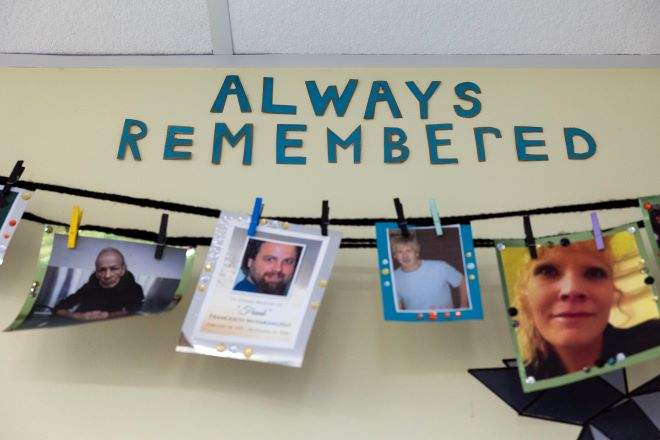
If the ban passes, only the 3rd District, which includes West and Southwest Philadelphia, would be eligible to implement a supervised injection site.
Meanwhile, City Council, the mayor and other officials have offered no solutions that have actually helped stanch the flow of drugs to the city, provided care to those in the throes of addiction, or offered meaningful support for residents and businesses living in the midst of the drug crisis. Which begs the question: If not Safehouse, then what? Doing nothing cannot be the answer.
As The Works’ Shawn Hopkins says, “Even though we’ve just been through Covid, the opioid epidemic is the public health crisis of our lifetime.”
![]() RELATED COVERAGE OF HOW PHILLY HANDLES THE DRUG CRISIS
RELATED COVERAGE OF HOW PHILLY HANDLES THE DRUG CRISIS



